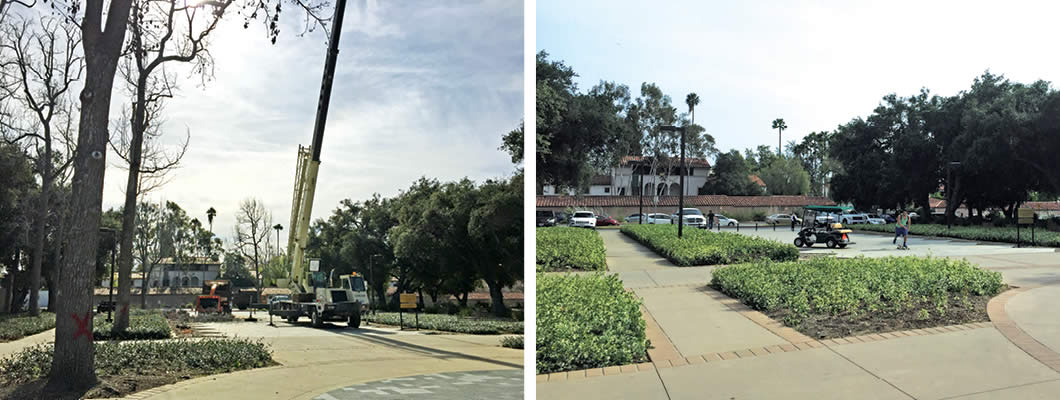College News
Tough Row to Let Go
Bacterial disease afflicts main campus feature
They once shaded numerous activities and framed magnificent views of Mount Baldy, but due to a devastating bacterial plant disease (Pierce’s Disease), the double row of Liquidambar (Sweetgum) trees is now a memory.
The disease that afflicted the 60-year-old trees causes branches and trunks to become brittle, increasing their chance of collapsing. Professor of Biology Stephen Adolph shares some insight on the devastating disease.

“Pierce’s Disease is caused by a bacterial species that can infect a wide variety of different plants. It devastated a lot of grapevines in the early 20th century in Southern California, where it appears to have originated. The Liquidambar trees are not native, but they were very susceptible to the bacteria for some reason. It is spread by insects that feed on the plant’s water-conducting tissues,” he says. “This bacterial species appears to be spreading. For example, olive trees in Italy experienced an epidemic during the past several years. Different strains of the bacteria seem to affect different plant species.”
There is no cure, vaccine or Pierce’s Disease-resistant hybrid of the Liquidambar. The City of Claremont passed a moratorium on planting Liquidambar trees on public property, and the College decided to heed this directive on its campus. As part of its latest master plan amendment, the College worked with a landscape architect to select a replacement tree species that’s native to the area, drought tolerant, vertical in structure, resistant to known diseases and deciduous. While many species were considered, the Platanus mexicana (Mexican Sycamore) was selected and will be installed as funds are available.
There will be fewer trees planted, which will keep them away from existing buildings and allow for better health of both new trees and existing Coastal Live Oaks that were once crowded by the Liquidambars.